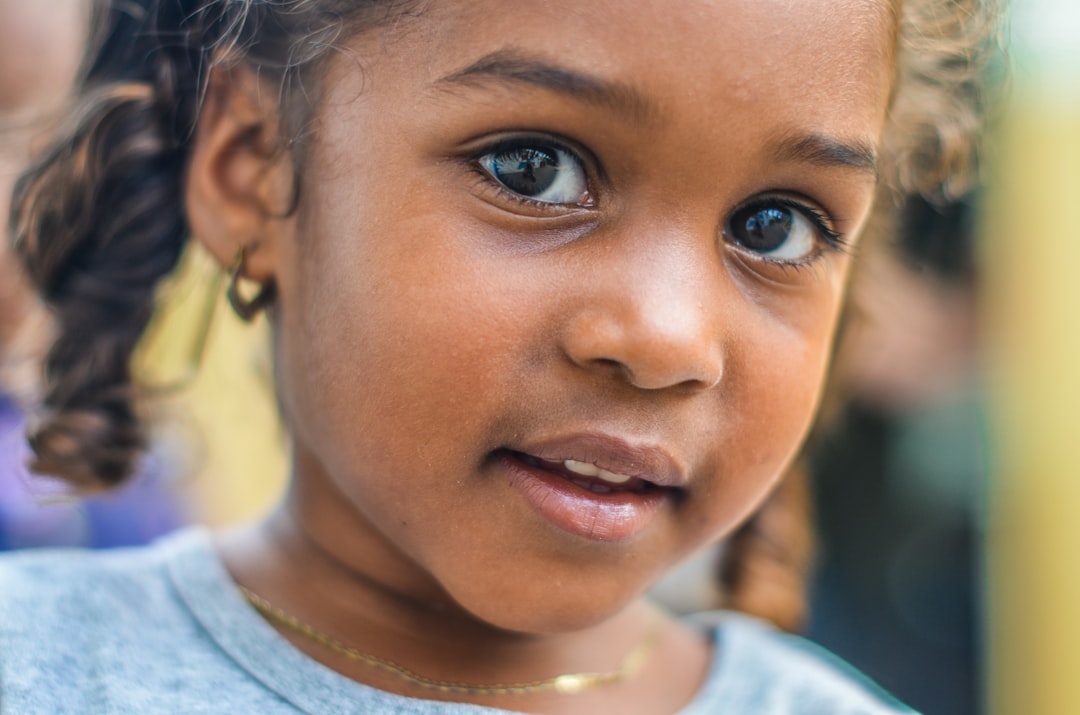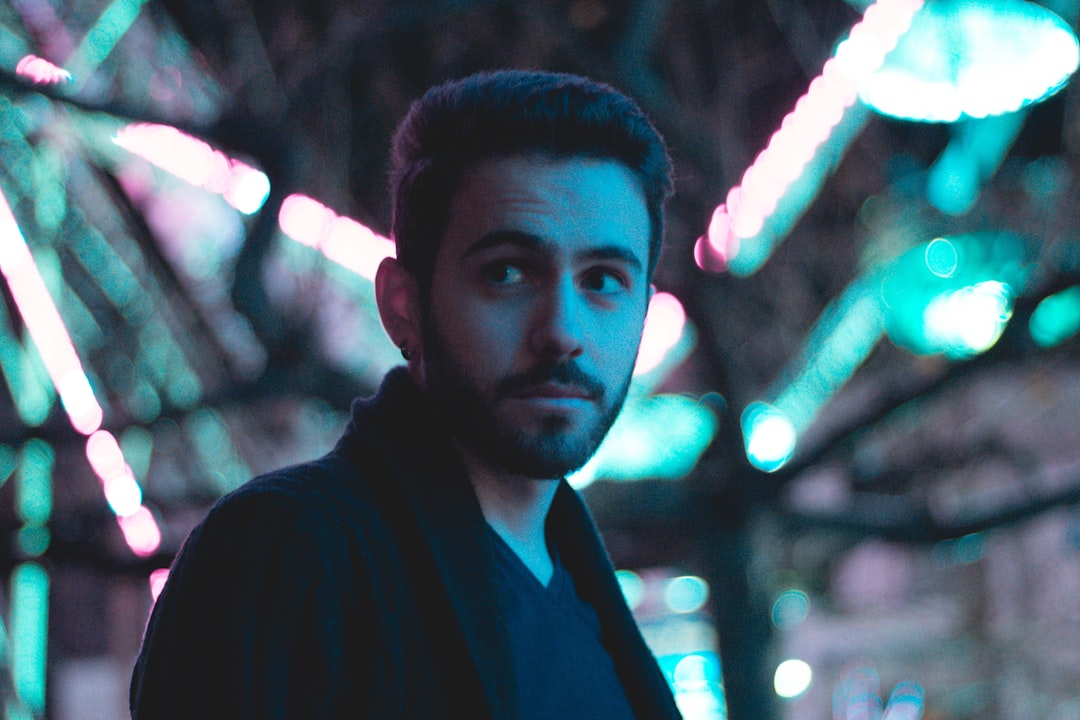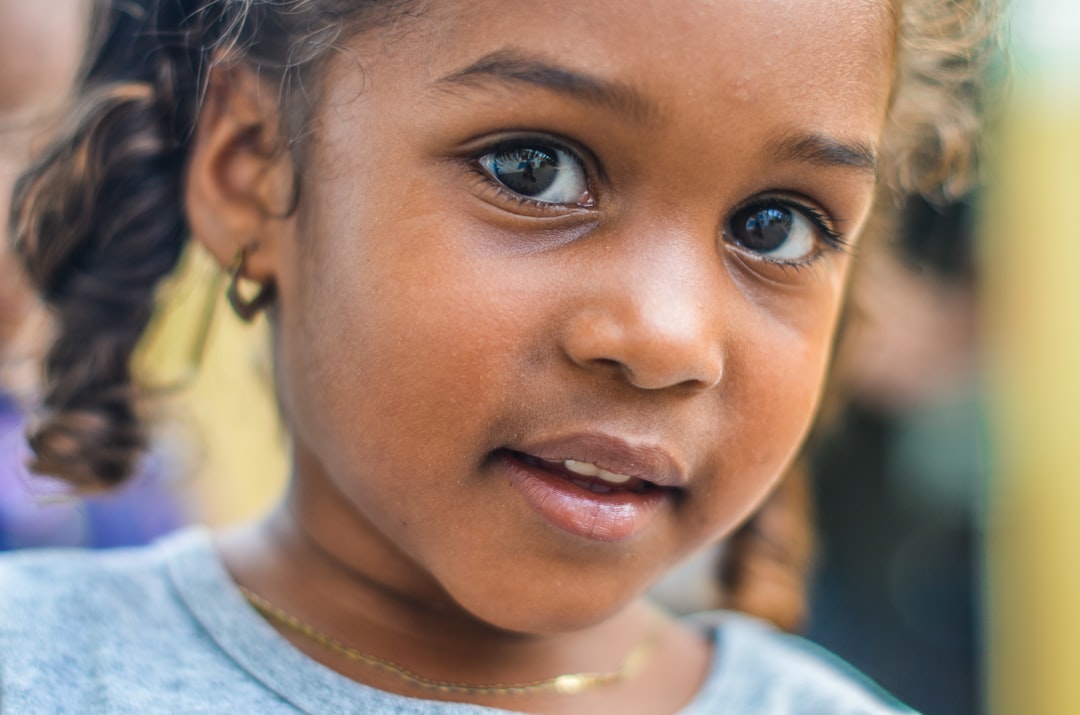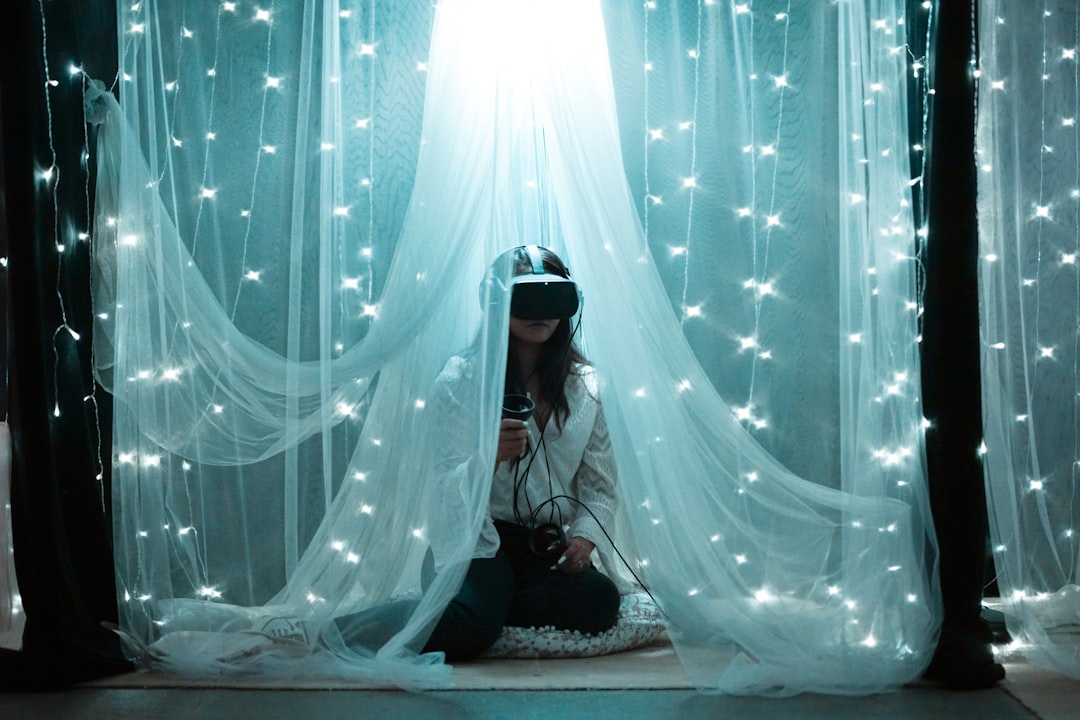AI-Enhanced Avatar Photography Blending Realism and Artistry in Digital Portraits
AI-Enhanced Avatar Photography Blending Realism and Artistry in Digital Portraits - AI-Driven Style Synthesis Merges Classic and Contemporary Art
AI is transforming the art world by merging classic and contemporary styles. Sophisticated algorithms, like style transfer, can seamlessly blend different artistic expressions, turning ordinary images into captivating works of art. This opens up exciting possibilities for artists and raises questions about the nature of creativity and the evolving roles of humans and machines in the creative process. It's an exciting time, as AI tools push the boundaries of art and visual culture in the digital age.
It's fascinating how AI can analyze and learn from vast amounts of artistic data. The ability to recognize and blend artistic styles – from Renaissance to modern – is truly remarkable. AI can effectively mimic the brushstrokes and textures of famous artists, creating a new kind of "hybrid" style. But that leads to questions: Is this a form of appropriation? Are we just creating simulations or something fundamentally different?
One intriguing aspect is style transfer, which can change the style of an image without altering the original content. Imagine turning a photograph into a Monet painting without actually painting it. The ethical questions arise again – does this devalue the artist's original work? And then there's the issue of upscaling images – adding pixels to improve clarity and detail. This can be incredibly useful in restoring old photographs or sharpening blurry images. Yet, it also opens the door to manipulating images in ways that can be problematic.
I'm also curious about the "emotional intelligence" being developed in AI. It's one thing to analyze technical aspects of an image, but can AI truly understand the emotional intent behind it? This could lead to truly innovative approaches to portrait photography, where AI not only enhances the image but also captures and accentuates the subject's emotional state. But will we still be able to discern the artistic vision of the photographer, or will it be solely the AI's vision? It’s a new frontier with exciting possibilities, but also one that raises profound ethical questions.
AI-Enhanced Avatar Photography Blending Realism and Artistry in Digital Portraits - ImagineMe.ai Pushes Boundaries of Hyperrealistic Digital Portraits
ImagineMe.ai is pushing the limits of what's possible with digital portraits using artificial intelligence. This AI tool takes text descriptions from users and transforms them into hyperrealistic images, allowing users to see themselves in new and creative ways. Users just need to upload a few photographs of themselves, and ImagineMe.ai trains a unique AI model to generate realistic digital portraits based on these images. The tool boasts high-quality, print-ready images that require no additional editing, and users can explore a wide range of artistic styles to customize their portraits. It's fascinating how AI is blurring the lines between realism and digital art, prompting questions about authenticity and the evolving nature of artistic expression in a technology-driven age. This development, along with other AI-driven tools, represents a broader shift in how we interact with and create digital images, potentially changing how we perceive and interpret digital portraits in the future.
ImagineMe.ai is a tool that uses AI to create hyperrealistic digital portraits based on text descriptions. Users can train a personal AI model by uploading a series of images, and within 24 hours, the AI generates a unique, customizable portrait that can be used for various purposes. This personalized AI approach is intriguing, and it raises some questions about the future of portraiture.
I'm particularly interested in how AI can enhance the details of an image. The recent advancements in AI, including deep learning techniques and generative adversarial networks (GANs), enable hyperrealistic image enhancement. Imagine a blurry old family photo transformed into a crisp and vibrant image, or a simple snapshot transformed into a work of art. AI can also remove watermarks using sophisticated inpainting techniques that analyze and fill in gaps in the image seamlessly.
Another intriguing development is the use of "emotional intelligence" in AI for image enhancement. AI algorithms can analyze facial expressions and adjust image properties like color saturation and contrast to convey a specific mood. This opens up a new world of possibilities for portrait photography, allowing photographers to capture and accentuate the emotional state of their subjects.
However, the ethical implications of AI-generated imagery are complex. If AI can effectively replicate the style of famous artists, does that diminish the value of the original work? And how do we define originality in an era of AI-enhanced images? It's important to consider the potential for misuse of AI in art, such as creating fake images or manipulating information.
Despite the complexities, the potential of AI in digital portraiture is immense. These AI tools are blurring the lines between human creativity and machine-generated art. The future of portrait photography seems to be one where technology and creativity work together to create new and exciting forms of artistic expression.
AI-Enhanced Avatar Photography Blending Realism and Artistry in Digital Portraits - Flexible AI Algorithms Allow for Extensive Creative Adjustments
Flexible AI algorithms are transforming how we think about creative adjustments in photography. These algorithms act like sophisticated tools, giving photographers a wider range of control over their images than ever before. They can blend realism with artistic styles, turning a simple photo into a more imaginative and captivating work of art. Imagine applying the style of Van Gogh to a portrait, or turning a landscape into a painterly masterpiece – these are just a few of the possibilities that AI is unlocking.
We're also seeing AI tools like style transfer and upscaling techniques become increasingly popular. Style transfer allows us to change the style of an image without altering the original content, while upscaling adds pixels to make images clearer and more detailed. These techniques are incredibly useful for restoring old photos, enhancing blurry images, and even making minor adjustments for better composition.
However, the growing reliance on AI raises questions about the nature of originality in art. Can AI truly capture the emotional depth that makes a work of art unique and meaningful? Are we just creating simulations or something fundamentally different? It's a debate that's only going to become more heated as AI technology continues to evolve.
Ultimately, the key will be finding the right balance. We need to embrace the exciting possibilities that AI offers without sacrificing the unique artistic vision of the photographer. It's about using these powerful tools to enhance creativity, not replace it.
The flexibility of AI algorithms is allowing for incredible creative adjustments in image processing, and it's raising many interesting questions for me as a researcher. The ability to perform dynamic style transfer—where AI analyzes millions of artistic works to learn styles and apply them to different images—is truly remarkable. This is opening up entirely new ways of viewing and interpreting images.
Another impressive development is the use of inpainting techniques in watermark removal, where algorithms essentially "fill in the blanks" of missing image data by analyzing the surrounding areas, resulting in realistic image reconstructions.
AI is also dramatically changing image enhancement. Generative Adversarial Networks (GANs) are proving incredibly effective at generating realistic images that look far superior to what traditional methods can achieve. These networks allow for predictive pixel generation where instead of just inserting pixels, AI algorithms can actually predict what pixel values should be present, which results in crisp, well-defined details without the artifacts that often occur in less sophisticated upscaling methods.
I'm also fascinated by the emerging "emotional intelligence" of AI, where it can analyze facial expressions to determine mood, and then make adjustments to an image's color saturation or contrast to match the perceived mood. This has huge potential in portrait photography where it could add an entirely new dimension of artistic expression, but it also raises questions about how the photographer's role might change in this process.
The use of facial recognition to preserve key facial features during artistic transformations is a smart approach, ensuring that portrait subjects remain identifiable, even when filters and stylizations are applied. These tools are allowing for much greater customization control, which lets users dramatically alter backgrounds or styles, while keeping the focus on the subject, which reveals new possibilities for personalized creativity.
But it's not just the quality of the output that's exciting, it's the way AI algorithms are now capable of scaling up images while maintaining the original aspect ratio. This ensures that enhancements look natural and avoid the pixelation common in less sophisticated methods. It's truly amazing how AI can restore old photos to look almost like contemporary images.
This constant push for realism and artistic refinement has raised crucial questions about originality and the ethics of AI in art. AI's ability to replicate styles of historical artists raises ethical concerns about copyright and ownership. While we're seeing the potential of AI to enhance creativity, we also need to consider the risks of diluting the value of authentic, original artistic creations.
AI-Enhanced Avatar Photography Blending Realism and Artistry in Digital Portraits - Data-Driven AI Art Creation Expands Artistic Possibilities
Data-driven AI art creation is fundamentally changing how we think about digital art, particularly portrait photography. AI tools can now analyze massive amounts of artistic data, replicating different styles to create digital portraits that blend realism with artistic flair. This opens up a world of possibilities for anyone who wants to explore artistic expression through digital portraits.
It's exciting, but raises some important questions. Is this a new form of creativity, or just mimicking other artists? What does it mean for authorship? As AI becomes more sophisticated, it challenges us to re-think the role of the artist, and how we view the art itself. We're living in a time of rapid change in digital art, where technology is blurring the lines between human intention and machine output.
AI is weaving its way deeper into photography, and I'm particularly fascinated by the ways it's enhancing and transforming images. One of the most intriguing advancements is the use of generative adversarial networks (GANs) for image upscaling. These networks go beyond simply adding pixels; they actually predict what those pixels should be, creating a more natural and detailed image without the artifacts that often plague traditional methods.
It's almost like AI is gaining "emotional intelligence," analyzing not just the technical aspects of an image but also its emotional context. Algorithms can now adjust properties like contrast and brightness to amplify the mood captured in a portrait, which opens up new possibilities for artistic expression.
Then there's the whole issue of inpainting techniques. AI uses these algorithms to predict missing or obscured parts of an image, allowing for seamless watermark removal and restoration of image integrity. While this has practical implications, it also raises ethical questions.
The ability to perform dynamic style transfer is another exciting development. AI can now analyze multiple artistic styles simultaneously, giving users the power to create truly unique interpretations of their photographs instead of being limited to a single aesthetic.
What's truly remarkable is how AI can now preserve facial features while applying significant artistic transformations. This is made possible by facial recognition technology, ensuring that the subject remains recognizable even as their image is creatively manipulated.
These advancements in AI are not only changing the way we edit and enhance images, but also shifting the collaboration between the artist and the machine. It raises questions about the future of art and authorship – is AI simply a tool or is it a collaborator, even a co-creator?
Of course, there are ethical considerations to keep in mind. AI's ability to replicate artistic styles raises concerns about originality and copyright, forcing us to reconsider the value and definition of original work. The use of AI in photography is blurring lines, creating a fascinating and complex landscape for artists, researchers, and anyone interested in the future of art.
AI-Enhanced Avatar Photography Blending Realism and Artistry in Digital Portraits - Photorealistic Avatar Reconstruction Advances in Computer Vision
Photorealistic avatar reconstruction is a rapidly evolving area in computer vision, promising a future where digital portraits can blur the lines between reality and digital art. Techniques like SEEAvatar and StyleAvatar use neural networks to generate 3D avatars from simple text descriptions or images, achieving impressive levels of realism. Techniques like AvatarMAV, utilizing neural voxels, enable rapid 3D avatar reconstruction with motion awareness. This means that these avatars can capture realistic facial expressions and movements.
While advancements are exciting, challenges remain. Many existing methods struggle with achieving precise geometry and maintaining high-quality appearance. These limitations raise questions about the authenticity of AI-generated avatars and their ethical implications. Nevertheless, the progress in avatar reconstruction is pushing the boundaries of what is possible in digital portrait photography, ultimately changing how we create and perceive digital representations of ourselves. This evolving technology is raising questions about the roles of humans and AI in the creative process, as well as the future of digital portraiture.
The world of computer vision is witnessing remarkable progress in the realm of photorealistic avatar reconstruction. Deep learning algorithms are pushing the boundaries of what's possible, enabling the creation of highly detailed 3D models from 2D images. This technology has far-reaching implications, bringing us closer to truly immersive virtual experiences in gaming, virtual meetings, and beyond.
One fascinating development is the increased precision in facial animation. AI algorithms can now accurately track and mimic subtle facial expressions, creating digital avatars that convey a wide range of emotions with remarkable lifelikeness. Imagine the possibilities for virtual interactions, where digital representations can communicate authentically and empathetically, bridging the gap between physical and digital worlds.
Generative Adversarial Networks (GANs) are making waves in the realm of image enhancement. These algorithms don't just upscale images; they can create entirely new pixels based on learned data. The result is a truly impressive leap forward, restoring old photos and enhancing details in a way that's far more natural and realistic than traditional methods.
Watermark removal is another area where AI is proving its worth. Inpainting techniques are becoming more sophisticated, allowing for seamless removal of unwanted elements while preserving the image's integrity. Algorithms analyze surrounding areas and predict missing pixels, essentially "filling in the blanks" in a way that's remarkably convincing.
The ability to dynamically apply multiple artistic styles to a single image is becoming increasingly common. It's no longer about selecting a single filter – AI can now analyze various aesthetics simultaneously, allowing users to blend and merge different styles, unlocking a whole new dimension of creative possibilities.
Another intriguing development is the emergence of "emotional intelligence" in image processing. AI algorithms can now analyze an image's context to determine its emotional weight, adjusting color palettes and brightness to amplify or soften the mood captured in a photograph. This technology could fundamentally alter the art of portrait photography, enabling a more nuanced expression of emotion.
Real-time image processing is becoming increasingly viable, thanks to advances in computing power. This means that photographers can now apply enhancements and artistic filters in real-time during live shoots, enhancing their creative workflow and enabling immediate feedback.
Facial recognition technology plays a crucial role in preserving identity during avatar creation. AI algorithms can identify key facial features and retain them even as the image is stylized, ensuring that avatars maintain a strong resemblance to their real-world counterparts.
AI is also taking advantage of metadata to enhance images. By analyzing data associated with an image, such as time of day or weather conditions, algorithms can adjust settings for more nuanced and contextually relevant enhancements.
However, the rise of AI in art raises critical ethical questions. AI's capacity to replicate the styles of famous artists challenges our understanding of originality and authorship. We're entering a world where it's increasingly difficult to discern between genuine artistry and machine-generated mimicry, forcing us to re-evaluate the value of authenticity in art. The ethical implications of AI-generated art are complex and evolving, demanding careful consideration and responsible development of these powerful technologies.
More Posts from kahma.io:
- →AI-Powered Virtual Haircut Simulation Enhancing Portrait Photography with Free Digital Styling Tools
- →How White Backgrounds Transform Product Photography A Technical Analysis of Light Reflection and Shadow Control
- →7 AI Tools That Can Save Your Blurry Travel Photos A Practical Guide for Social Media Creators (2024)
- →7 Data-Driven Techniques for Writing Nature Captions That Increase Instagram Engagement by 47%
- →7 Photography Quotes That Will Ignite Your Creative Drive Every Monday
- →Navigating the Changing Costs of Photography With AI



